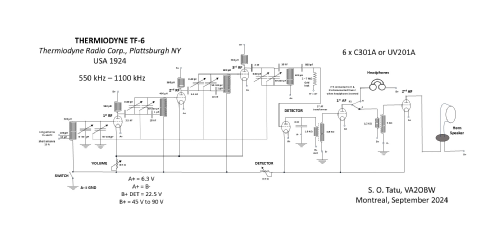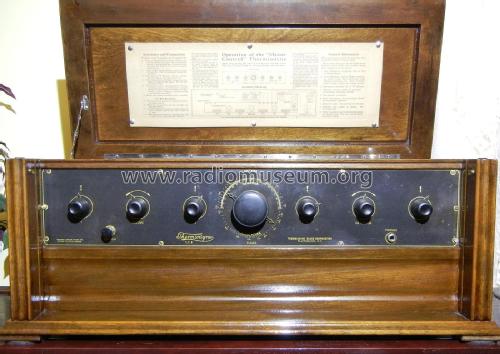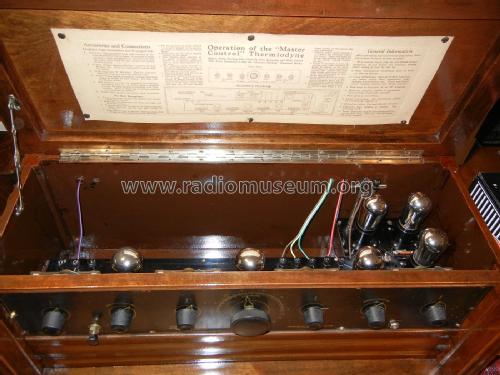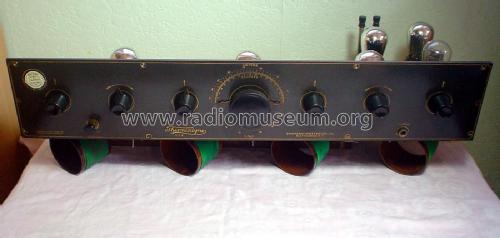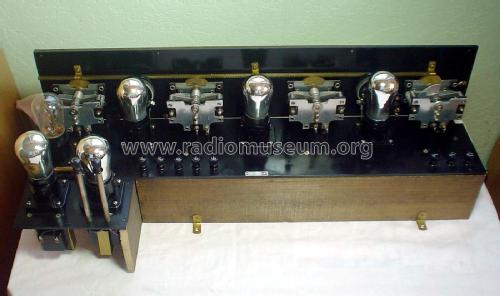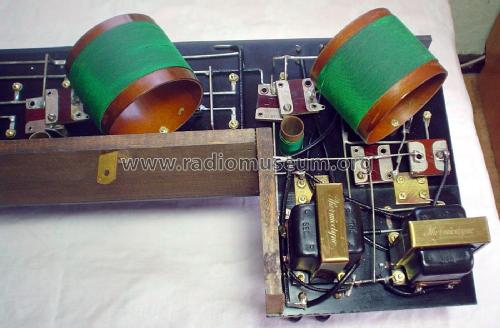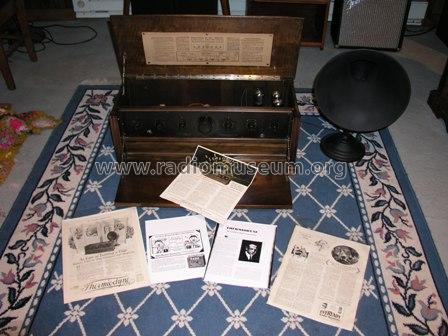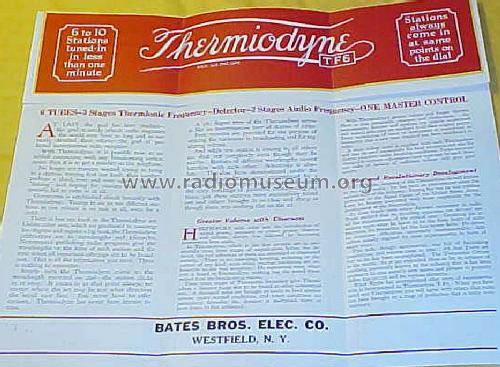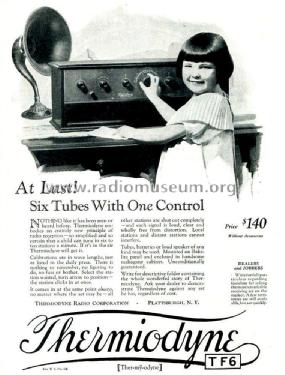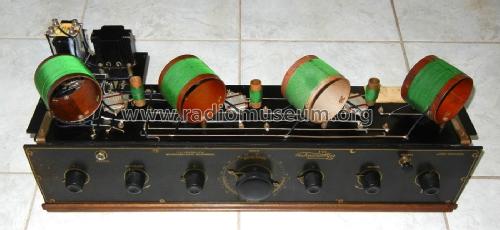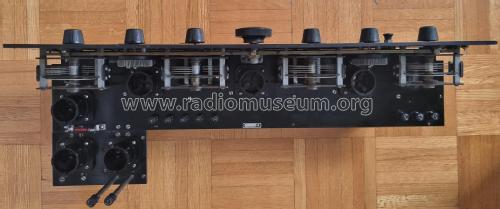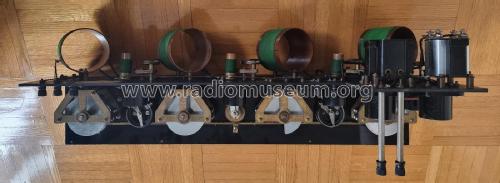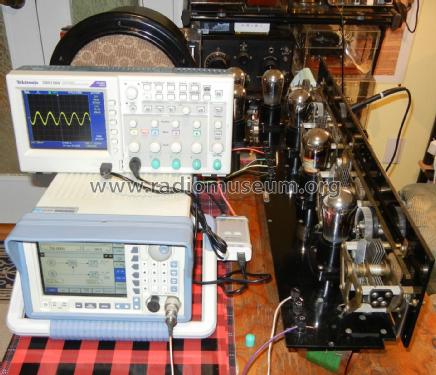TF6 Storage or Dry Batteries
Thermiodyne Radio Corp., Plattsburgh NY. (ex Capital Phonolier, Potter-Shepard) later Algonquin Electric Co.
- Country
- United States of America (USA)
- Manufacturer / Brand
- Thermiodyne Radio Corp., Plattsburgh NY. (ex Capital Phonolier, Potter-Shepard) later Algonquin Electric Co.
- Year
- 1925
- Category
- Broadcast Receiver - or past WW2 Tuner
- Radiomuseum.org ID
- 63321
Click on the schematic thumbnail to request the schematic as a free document.
- Number of Tubes
- 6
- Main principle
- TRF without regeneration
- Wave bands
- Broadcast only (MW).
- Power type and voltage
- Storage and/or dry batteries / A: 6 V & B det: 22.5 V & B+: 45 V or 90 Volt
- Loudspeaker
- - This model requires external speaker(s).
- Material
- Wooden case
- from Radiomuseum.org
- Model: TF6 [Storage or Dry Batteries] - Thermiodyne Radio Corp.,
- Shape
- Tablemodel, low profile (big size).
- Dimensions (WHD)
- 29.5 x 11.5 x 13 inch / 749 x 292 x 330 mm
- Notes
-
One dial (primary tuning control knob)
Radio Collector's Guide 1921-1932 lists two TF6 models: one uses storage or dry batteries, TF6 [Storage or Dry Batteries] and the other uses storage batteries only, TF6 [Storage Batteries only].
See Professor Serioja Tatu's Test Bench Measurements of this radio here.
- Net weight (2.2 lb = 1 kg)
- 40 lb 0 oz (40 lb) / 18.160 kg
- Price in first year of sale
- 140.00 USD
- External source of data
- Ernst Erb
- Source of data
- Radio Collector`s Guide 1921-1932
- Other Models
-
Here you find 5 models, 3 with images and 1 with schematics for wireless sets etc. In French: TSF for Télégraphie sans fil.
All listed radios etc. from Thermiodyne Radio Corp., Plattsburgh NY. (ex Capital Phonolier, Potter-Shepard) later Algonquin Electric Co.
Collections
The model is part of the collections of the following members.
Forum contributions about this model: Thermiodyne Radio: TF6
Threads: 1 | Posts: 1
Test bench measurements:
- Measured frequency band: 540 kHz – 1114 kHz, perfectly aligned with the dial indications. This covers the 550 kHz -1100 kHz declared by the manufacturer, 100 years after its tuning in the factory. Tuning from a station to another is very easy using only the central main tuning. Minimum adjustments are required from the 4 capacitors in parallel with the main tuning.
- Receiver sensitivity is around - 60 dBm with a good signal to noise ratio, measured with Rohde & Schwarz SM300 signal generator connected at long antenna connector with a proper impedance adapter; signals at -70 dBm still detectable. Noise level is -75 dBm, compared to the best Atwater Kent model 20 receivers. The same sensitivity is observed over the entire BC band. At the minimum volume, the sensitivity is – 15 dBm, at the max around – 60 dBm.
- The AF signal has been captured at the speaker output (1 kHz tone demodulated, as measured). Litle distortions are observed, as seen in the test bench measurements picture. Detector rheostat is around 15 degrees right to the middle (1 o’clock) for the best detection (signal close as much as possible to a sinusoidal one).
- If the radio starts oscillating in AF (hundreds of Hz) a good idea is to move the external speaker away or to reduce the B+ voltage (for example from 90 V to 45V), to reduce the overall gain. This audio oscillations or humm can occur because of the high gain of the radio and of the mechanical vibrations of the tubes due to speaker.
- The measured DC current in A battery is between 1.1 A - 1.66 A (6 x 0.25A = 1.5 A) with both rheostats (volume and detector) at minimum and maximum values respectively. The measured voltage at the heater (cathode) is between 3.8 V and 6 V in the same conditions. Therefore, the radio must be tuned to operate at the minimum DC current, as close as possible to minimum volume to economise the A battery. Both rheostats can be turned OFF.
Alan Larsen, 02.Oct.24
